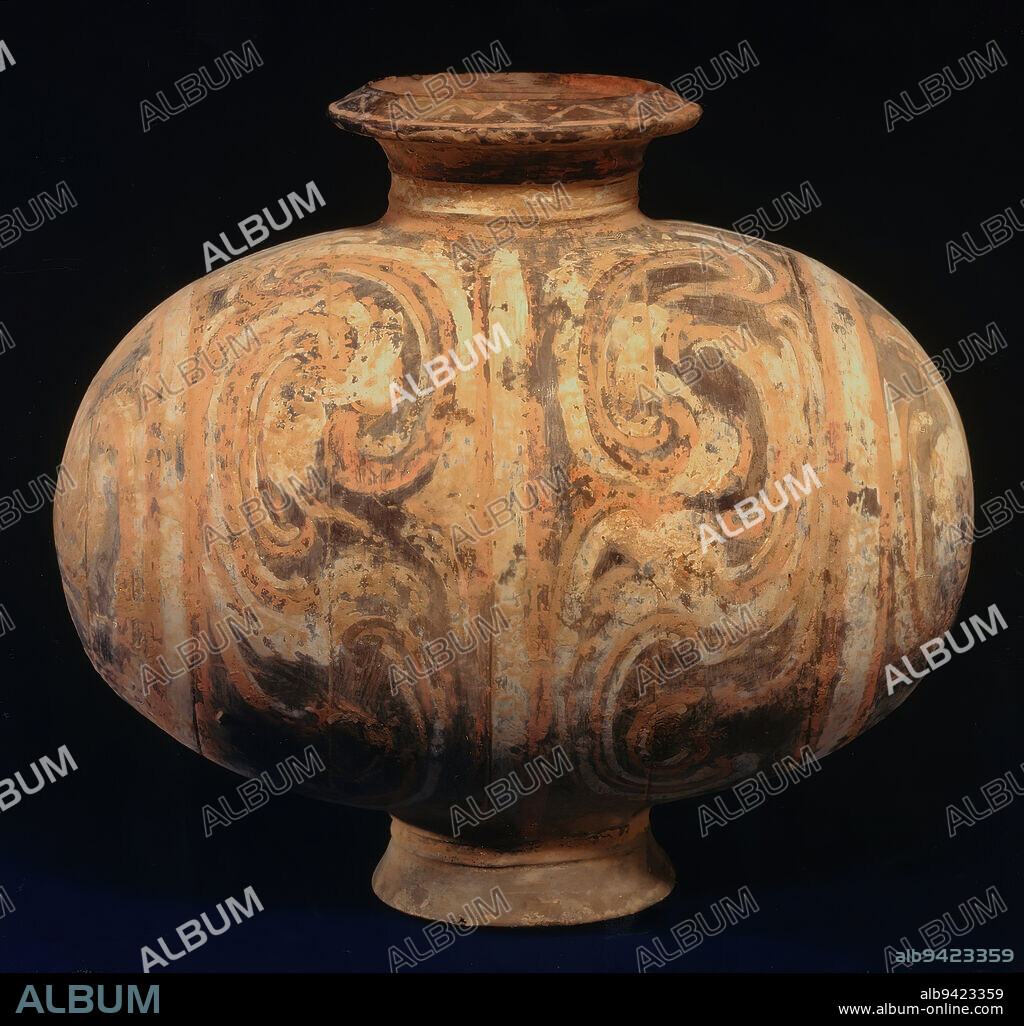alb9423359
Cocoon-shaped Jar, 3rd-early 2nd century BCE, 12 1/8 x 13 1/4 x 8 1/2in. (30.8 x 33.7 x 21.6cm), Earthenware with traces of pigment, China, 3rd-2nd century BCE, Silk production, from the rearing of silkworms to weaving silk cloth, was an important source of income to Chinese farming families. This type of jar with its elegant cocoon shape was extremely popular during the Chin (221-206 b.c.) and Western Han periods (206 b.c.-a.d. 25). Plain grey earthenware was often painted during Han. The colors used were red, brown, green, yellow, black, white, orange, and blue. Jars like this may have been used in the ritual practices of sericulture as the rearing of silkworms was fraught with superstitions during the Han period.

|
Zu einem anderen Lightbox hinzufügen |
|
Zu einem anderen Lightbox hinzufügen |



Haben Sie bereits ein Konto? Anmelden
Sie haben kein Konto? Registrieren
Dieses Bild kaufen.
Nutzung auswählen:

Untertitel:
Siehe automatische Übersetzung
Cocoon-shaped Jar, 3rd-early 2nd century BCE, 12 1/8 x 13 1/4 x 8 1/2in. (30.8 x 33.7 x 21.6cm), Earthenware with traces of pigment, China, 3rd-2nd century BCE, Silk production, from the rearing of silkworms to weaving silk cloth, was an important source of income to Chinese farming families. This type of jar with its elegant cocoon shape was extremely popular during the Chin (221-206 b.c.) and Western Han periods (206 b.c.-a.d. 25). Plain grey earthenware was often painted during Han. The colors used were red, brown, green, yellow, black, white, orange, and blue. Jars like this may have been used in the ritual practices of sericulture as the rearing of silkworms was fraught with superstitions during the Han period.
Bildnachweis:
Album / quintlox
Freigaben (Releases):
Model: Nein - Eigentum: Nein
Rechtefragen?
Rechtefragen?
Bildgröße:
2918 x 2774 px | 23.2 MB
Druckgröße:
24.7 x 23.5 cm | 9.7 x 9.2 in (300 dpi)
 Pinterest
Pinterest Twitter
Twitter Facebook
Facebook Link kopieren
Link kopieren Email
Email
